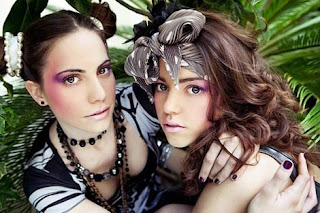Both Andre Kertesz and Henri Carier-Bresson believed that they “need to be invisible when taking photos” (Danilovic, Photography: Shooting the Truth. Module 10) Kertesz and Carier-Bresson using their feeling to capture the moment which truly express the reality. Kertese was one of the pioneers of photojournalism. Different from other official photographers who worked for the war department, he brought a small camera with him all the time to take the informal and candid photographs. Just these informal and candid photographs reveal the truth and present the reality to the public. Just these informal and candid photographs may help a family. One evident was those pictures of life behind the war line. Henri Cartier-Bresson said that “there is nothing in this world that does not have a decisive moment.” He tried his best not to involve with people who will be the characters in his photograph. Kertesz and Carier-Bresson must to be invisible in order to take the nature and objective photos.
 |
| "Behind the Lines" by Andre Kertesz |
 |
| By Henri Carier-Bresson |
The works of Eugene Smith and Sebastio Salgado were arranged well. Compare to Kertesz and Carier-Bresson’s “to be invisible”, Smith and Salgado have involve themselves into the lives of the people. They believe that good relationship with people will help them create the photographs. Eugene Smith is the master of using lights as well as the story-maker. He liked to create his own picture with his designed composition. The work of the “Tomoko Uemura in Her Bath” was carefully arranged before it has been taken. The majority characters in the works of Sebastio Salgado were those laborers. Salgado believed that spending more time with people would make him to see those people’s suffering and strength, which approaches at times a spiritual ascendancy. (Danilovic, Photography: Shooting the Truth. Module 11) Furthermore, Salgado and Smith were focus on the postproduction work in their photos.
 |
| "Tomoko Uemura in Her Bath" by Eugene Smith |
 |
| "Works: An Archaeolgy of the Industrial Age" by Sebastiao Salgado |
“According to the code of ethics of the National Press Photographers Association (NPPA), photojournalists should respect the integrity of the photographic moment. The long postproduction process regardless if it is in a dark room or on a computer using Photoshop, is contrary to the basic principles of photojournalism” (Danilovic, Photography: Shooting the Truth. Module 11) The work of the Eugene Smith and Sebastio Salgado breach the NPPA’s rule. They are subjective and unethical.
Although, I’d preferred the approach of Kertesz and Carier-Bresson; I also admire the works of Smith and Salgado. Those 4 photojournalists had some passion to their job. From their works, we would feel there passion.
Works Cited
Works Cited
Danilovic, S. (n.d.). Photography: Shooting the Truth. Module 10.
Danilovic, S. (n.d.). Photography: Shooting the Truth. Module 11.





















